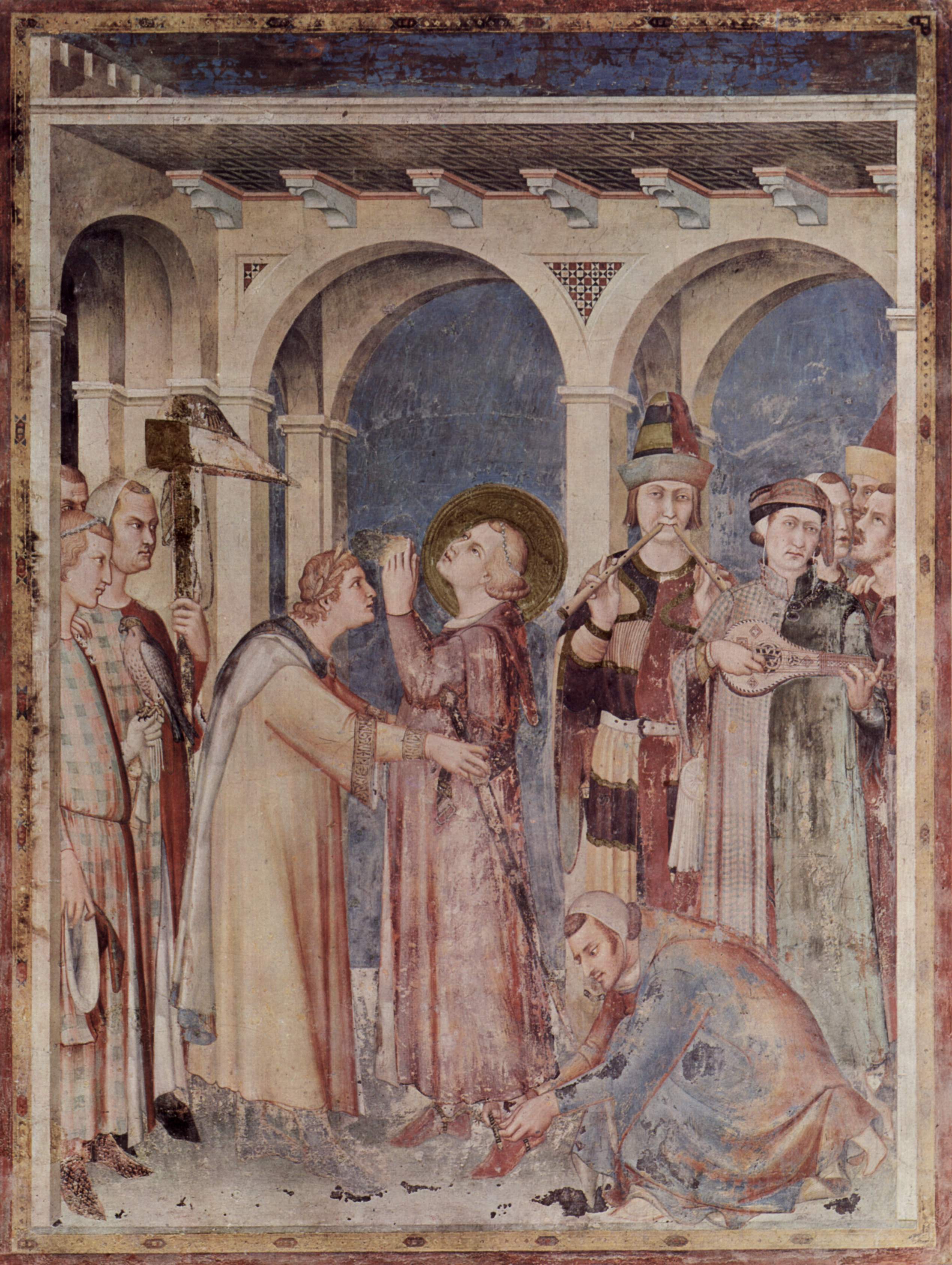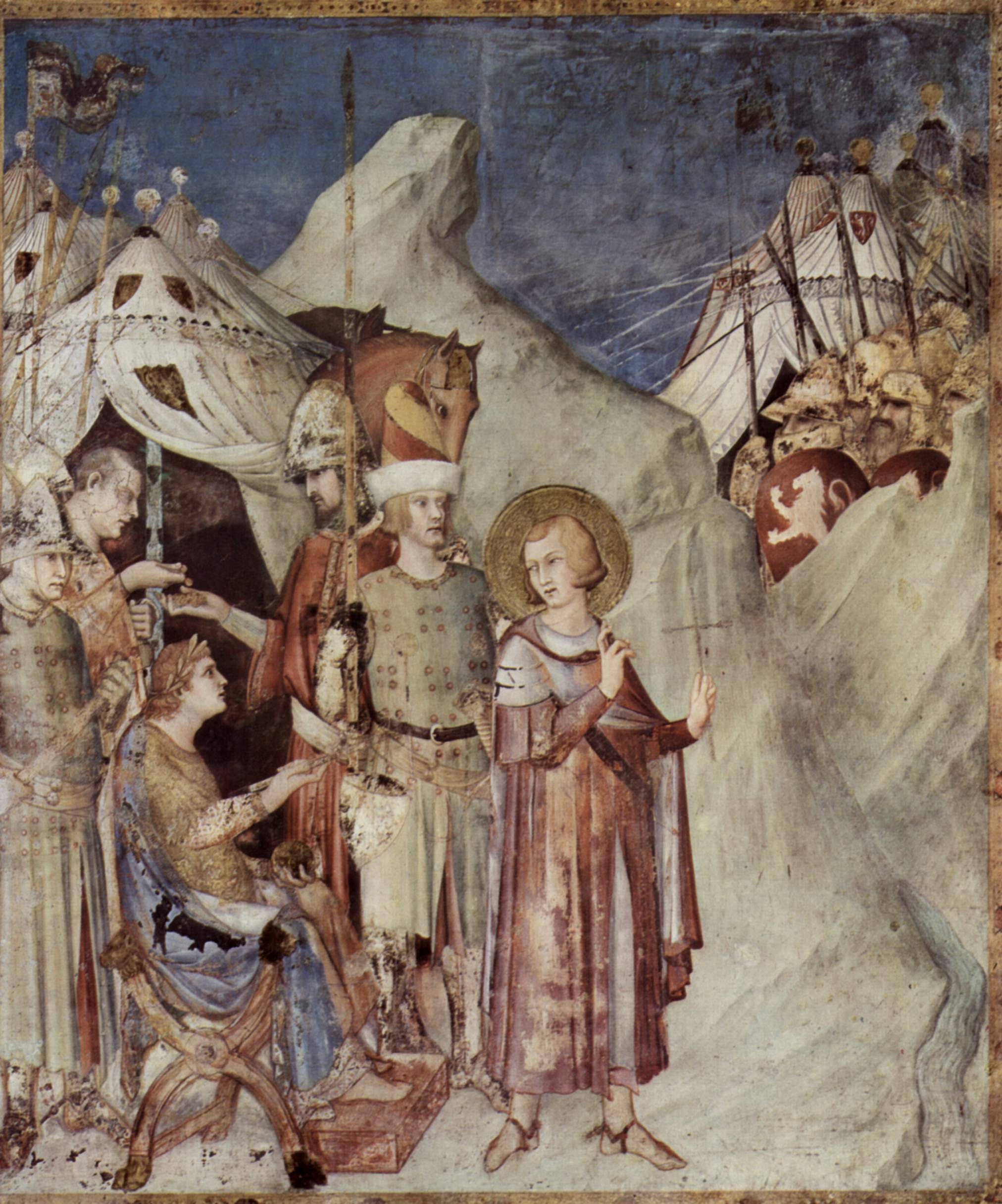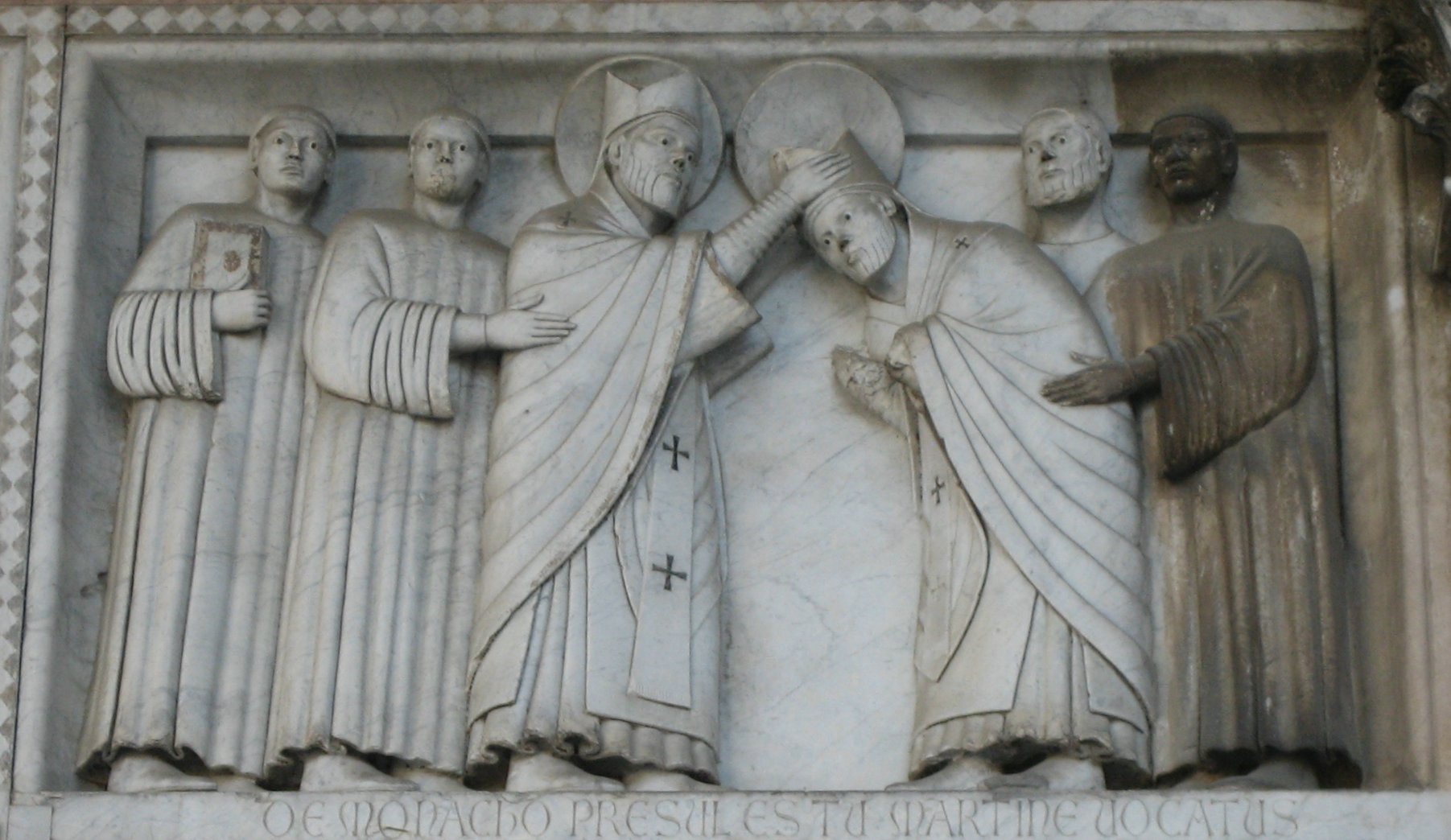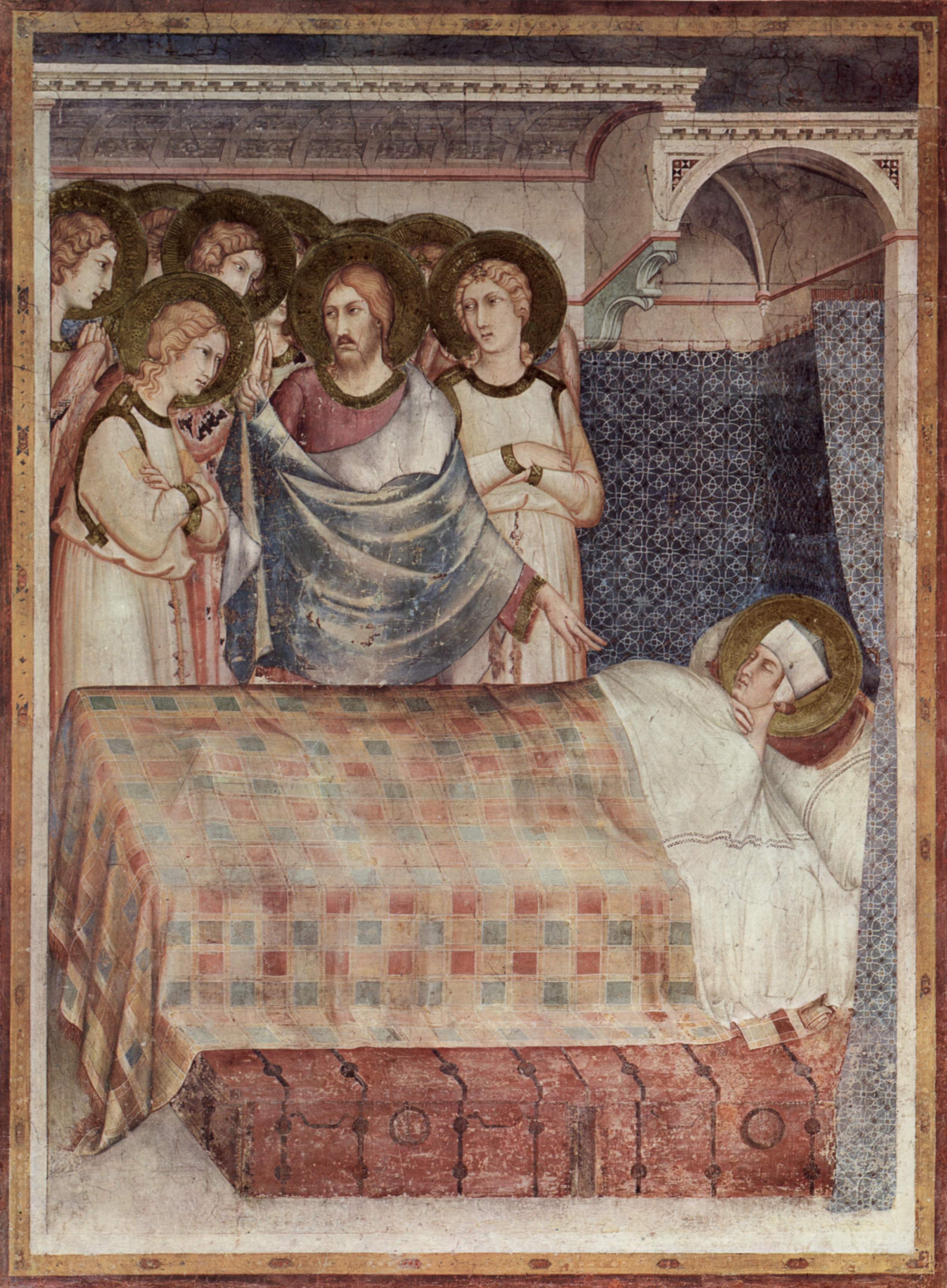Martin of Tours: A rare example of lived Christian values in the history of the Church
If you live in Germany or other parts of Europe, you might have witnessed a peculiar sight on the evening of November 11th: children parading through the streets with glowing lanterns, singing cheerful songs, and following a rider on a horse dressed as a Roman soldier. Despite the November chill, the atmosphere was warm and festive, and perhaps you even spotted the traditional Weckmann – a sweet bread figure often enjoyed on this day.
 St. Martin’s procession in Cologne (2017). Every year on (or around) November 11th, children in Germany parade through the streets with lanterns to celebrate St. Martin’s Day, who is usually depicted as a Roman soldier on horseback. Source: Wikimedia Commonsꜛ (license: CC BY-SA 4.0).
St. Martin’s procession in Cologne (2017). Every year on (or around) November 11th, children in Germany parade through the streets with lanterns to celebrate St. Martin’s Day, who is usually depicted as a Roman soldier on horseback. Source: Wikimedia Commonsꜛ (license: CC BY-SA 4.0).
This scene is part of Martinstag (or just St. Martin; English: Saint Martin’s Day), a cherished tradition in Germany and beyond. But have you ever wondered who is being celebrated? The man behind these customs is Martin of Tours, a Roman soldier turned Christian bishop, whose life of humility and compassion inspired centuries of reverence. In this post, we briefly explore Martin’s story, the miracles and legends attributed to him, and how his legacy shaped the traditions we know today.
Biography
The figure in the costume of a Roman soldier that is celebrated every year on November 11th is none other than Saint Martin of Tours. Martin was born in the Roman province of Pannonia Prima (modern-day Szombathely, Hungary) around 316/317 to a Roman military officer and was expected to follow his father’s path. Raised in Pavia (northern Italy), he first encountered Christianity at an early age, becoming a catechumen (a Christian convert undergoing instruction) by ten. Despite his personal inclination toward Christian asceticism, he entered military service under Emperor Constantine II, as mandated by Roman law.
 St. Martin is conscripted by the emperor for military service, fresco cycle with scenes from the life of St. Martin of Tours, chapel in the lower church of San Francesco in Assisi, Simone Martin, 1322-1326. Source: Wikimedia Commonsꜛ (license: public domain).
St. Martin is conscripted by the emperor for military service, fresco cycle with scenes from the life of St. Martin of Tours, chapel in the lower church of San Francesco in Assisi, Simone Martin, 1322-1326. Source: Wikimedia Commonsꜛ (license: public domain).
While stationed in Amiens (modern-day France) in 334, Martin performed an act of charity that would later define his legacy: he shared his cloak with a beggar on a cold winter’s day. This event marked a turning point in his spiritual journey and we discuss it in more detail below.
 St. Martin shares his mantle, fresco cycle with scenes from the life of St. Martin of Tours, chapel in the lower church of San Francesco in Assisi, Simone Martin, 1322-1326. Source: Wikimedia Commonsꜛ (license: public domain).
St. Martin shares his mantle, fresco cycle with scenes from the life of St. Martin of Tours, chapel in the lower church of San Francesco in Assisi, Simone Martin, 1322-1326. Source: Wikimedia Commonsꜛ (license: public domain).
After his baptism in 351, Martin sought to reconcile his faith with his role as a soldier. By 356, Martin served under Julian the Apostate, the Roman emperor who was assembling an army to confront the Alemanni, a Germanic tribe frequently clashing with Roman forces, posed a significant threat to the empire’s northern borders during this time. Despite his military obligations, Martin declared that he could no longer fight, stating, “I am now a soldier of Christ” (miles Christi). Accused of cowardice, he defended his faith by offering to face the enemy unarmed. Before this dramatic test of faith could occur, the Alemanni unexpectedly surrendered, sparing Martin from both combat and potential martyrdom.
 St. Martin renounces his military and knightly life, Simone Martini, 1322. Source: Wikimedia Commonsꜛ (license: public domain).
St. Martin renounces his military and knightly life, Simone Martini, 1322. Source: Wikimedia Commonsꜛ (license: public domain).
Following his military service, Martin studied under Bishop Hilary of Poitiers and later lived as a hermit. Around 361, he founded the first monastic community in the Western Roman Empire at Ligugé (near Poitiers). His monastic lifestyle, combined with missionary zeal, profoundly influenced the Christianization of rural Gaul.

“From a monk you were called to be a priest, Martinus” - one of the four sculptures on the façade of St. Martin’s Cathedral in Lucca, Italy. Source: Wikimedia Commonsꜛ (license: CC BY-SA 2.5).
Despite his reluctance, Martin was consecrated as Bishop of Tours around 370/371. True to his ascetic roots, he lived outside the city in a monastic settlement. His tenure was marked by the destruction of pagan temples (see below), the founding of churches and monasteries, and a commitment to pastoral care. Martin died in 397 during a pastoral visit and was buried on 11 November, now celebrated as Martinstag.
 Greeting card for St. Martin’s Day, Erfurt (1913). Source: Wikimedia Commonsꜛ (license: public domain).
Greeting card for St. Martin’s Day, Erfurt (1913). Source: Wikimedia Commonsꜛ (license: public domain).
While his life as a soldier and bishop forms the backbone of his story, the legends and miracles attributed to Martin have deeply enriched his legacy. These stories, often recorded by his contemporary Sulpicius Severus, reflect Martin’s reputation as a saintly figure and miracle worker, embodying Christian virtues of charity, humility, and spiritual authority.
Legends and miracles
Many legends and miracles are attributed to Martin, reflecting his reputation as a saintly figure and miracle worker. These stories, often recorded by his biographer Sulpicius Severus, highlight Martin’s compassion, spiritual authority, and commitment to Christianizing Gaul. While the legend of Martin sharing his cloak with a beggar is the most famous, other tales underscore his attributed miraculous powers and moral virtues. Here are some of the most famous legends associated with him.

“Life of St. Martin of Tours” - one of the four sculptures on the façade of St. Martin’s Cathedral in Lucca, Italy. Source: Wikimedia Commonsꜛ (license: CC BY-SA 2.5).
Sharing the cloak
The story of Martin sharing his military cloak with a beggar is perhaps his most famous act of charity. As mentioned above, this event occurred in Amiens during Martin’s military service. On a bitterly cold day, Martin encountered a nearly naked man shivering in the cold. As a Roman soldier, Martin carried little else besides his weapons and the chlamys, a woolen cloak commonly worn over armor. Unable to ignore the man’s plight, Martin unsheathed his sword and cut the cloak in half, giving one piece to the beggar.

That night, Martin dreamed of Jesus, clothed in the very piece of cloak he had given away, declaring to the angels, “Martin, yet a catechumen, has clothed me.” This vision deeply impacted Martin, solidifying his commitment to Christ and foreshadowing his baptism. The dream also tied his charitable act directly to Matthew 25:35–40 (“Whatever you did for one of the least of these brothers and sisters of mine, you did for me.”), reinforcing the theological message that acts of compassion are acts of service to Christ Himself.
 The Dream of St. Martin, fresco cycle with scenes from the life of St. Martin of Tours, chapel in the lower church of San Francesco in Assisi, Simone Martin, 1322-1326. Source: Wikimedia Commonsꜛ (license: public domain).
The Dream of St. Martin, fresco cycle with scenes from the life of St. Martin of Tours, chapel in the lower church of San Francesco in Assisi, Simone Martin, 1322-1326. Source: Wikimedia Commonsꜛ (license: public domain).
This story became central to Martin’s hagiography, illustrating his embodiment of Christian virtues even before fully joining the faith. Artists often depict this moment as a symbol of selfless love and divine recognition.

Charity of Saint Martin, polychrome wood, Chapelle Saint-Pierre, Saulges (Mayenne, France). Source: Wikimedia Commonsꜛ (license: CC BY-SA 3.0).
This story also holds some parallels with another well-known biblical narrative, the Parable of the Good Samaritan (Luke 10:25–37). In that parable, a Samaritan helps a wounded man left for dead on the roadside, demonstrating compassion and mercy, after a Jewish priest and a Levite pass by without aiding him. The Samaritan treated the man’s wounds, took him to an inn and paid for his further care. At that time, the Samaritans were considered misguided apostates by the Jews and were held in low esteem.

The Good Samaritan by François-Léon Sicard (1862–1934), in the Tuileries Gardens, Paris. Source: Wikimedia Commonsꜛ (license: public domain).
Both narratives emphasize:
- Compassion in action: Both stories emphasize the virtue of helping others through deeds rather than intentions. Martin’s act transcended societal hierarchies, while the Samaritan overcame ethnic and religious divisions, embodying the core Christian principle of loving one’s neighbor.
- Reflection of Christ’s teachings: Martin’s vision of Jesus wearing the half-cloak symbolizes the direct connection between serving others and serving Christ. The Samaritan’s actions echo Jesus’ command to “Go and do likewise.”
These parallels underscore the enduring moral and theological significance of Martin’s cloak-sharing story, deeply resonating with the core teachings of Christian charity and compassion.
Raising of the dead
One of the most striking accounts of Martin’s miraculous power is the revival of a catechumen who had died before receiving baptism. As described by Sulpicius Severus, this event occurred during Martin’s early years of ministry. A man, filled with the desire to learn from Martin and live a life of spiritual dedication, suddenly succumbed to a fever and died unbaptized. Martin was not present during the man’s death, but upon his return, he found the community mourning.
Moved by profound sorrow and faith, Martin entered the room where the body lay, shut the door, and prayed fervently. Sulpicius describes how Martin “felt the Holy Spirit empowering him with divine energy”. In a dramatic act of faith, Martin lay over the corpse, mirroring the prophet Elisha’s revival of the Shunammite’s son (2 Kings 4:32–35). Over two hours, the dead man’s body began to stir; his eyes fluttered open, and he returned to life. This man was immediately baptized and lived many more years, becoming a living testimony to Martin’s sanctity.

“The monk Martin had a dead man who was brought back to life” - one of the four sculptures on the façade of St. Martin’s Cathedral in Lucca, Italy. Source: Wikimedia Commonsꜛ (license: CC BY-SA 2.5).
This account established Martin’s role as a conduit of divine power, not only creating his reputation as a miracle worker but also reaffirming the theological importance of baptism in Christian salvation.

St. Martin of Tours raises a man from the dead by Godfried Maes, 1687. Source: Wikimedia Commonsꜛ (license: public domain).
Confronting evil spirits
Throughout his ministry, Martin is said to have confronted and overcome demonic entities. These accounts were meant to highlight his unwavering faith and spiritual authority. In one notable instance, Martin entered a pagan temple to destroy its idols (more details below), a common part of his mission to Christianize rural Gaul. Upon his approach, the temple trembled, and an idol reportedly crumbled before his prayers.

“Blessed Martin, you save a man plagued by the devil” - one of the four sculptures on the façade of St. Martin’s Cathedral in Lucca, Italy. Source: Wikimedia Commonsꜛ (license: public domain).
This triumph over demonic forces is a recurring motif in Martin’s legend, symbolizing the victory of Christianity over paganism. It also reflects the hagiographic tradition of portraying saints as protectors who safeguard their communities against spiritual and physical dangers.

St. Martin Healing the Possessed Man by Jacob Jordaens, 1630. Source: Wikimedia Commonsꜛ (license: CC BY-SA 2.5).
The reluctant bishop and the geese
Martin’s election as Bishop of Tours was accompanied by legendary resistance on his part. Deeply committed to an ascetic lifestyle, he considered himself unworthy of the position and tried to avoid the honor by hiding in a goose pen. The geese, however, betrayed him with their loud cackling, revealing his location to the townspeople. Forced to accept the role, Martin nonetheless carried his humility into his episcopal duties, continuing to live modestly outside the city.
 St. Martin (detail; full viewꜛ), Simone Martini, 1322-1326. Source: Wikimedia Commonsꜛ (license: public domain).
St. Martin (detail; full viewꜛ), Simone Martini, 1322-1326. Source: Wikimedia Commonsꜛ (license: public domain).
The association with geese became a staple of Martin’s iconography and is linked to the tradition of eating roast goose on Martinstag. This culinary custom may also have roots in pre-Christian harvest celebrations that were later Christianized in Martin’s honor. If Martin, as a committed Christian,would have supported the pagan “animal sacrifice” in his name is a question that remains unanswered. However, another, more recent tradition is the consumption of Weckmänner (sweet bread figures; also called Stutenkerl depending on the region) on Martinstag, which are shaped like a bishop.
 Weckmänner with clay pipes, the most common form of the sweet bread figures enjoyed on St. Martin’s Day in the Rhineland. Source: Wikimedia Commonsꜛ (license: CC BY-SA 3.0).
Weckmänner with clay pipes, the most common form of the sweet bread figures enjoyed on St. Martin’s Day in the Rhineland. Source: Wikimedia Commonsꜛ (license: CC BY-SA 3.0).
Legendary themes and their Christian symbolism
The legends surrounding Martin of Tours are steeped in Christian symbolism, often echoing the teachings and miracles of Jesus:
- The raising of the dead mirrors the miracles of Christ and the prophets, emphasizing the divine power granted to Martin.
- His victory over demonic forces symbolizes the triumph of faith over sin and darkness.
- Martin’s cloak-sharing story not only mirrors the Parable of the Good Samaritan but also serves as a Christ-like act of sacrifice, symbolizing how divine love transcends material possessions.
- His initial refusal to be called as a bishop shows his aversion to church offices and the church hierarchy, which is fully in line with Jesus rejection of worldly power and status and a merely external, ritualized faith.
- His refusal to go to war against the Germanic tribes and his subsequent resignation from the Roman army reflect Jesus’ principle of non-violence and love of enemies – in keeping with Jesus’ commandment to love one another as he has loved us. Throughout the history of the Church, this principle has continuously been neglected and violated, especially in the context of the Crusades and the Inquisition, but also on a smaller scale in the everyday life of the Church. Thus, Martin’s example of non-violence and love of enemies is a powerful, rare exception in a long history of violence and persecution of the Catholic Church.
- However, Martin’s forced conversion of the pagans and the destruction of their temples and idols (see below) are in stark contrast to Jesus’ teachings of love and forgiveness, and his example of non-violence and non-retaliation. This aspect of Martin’s life and ministry is often overlooked or downplayed in hagiographies and popular devotion.
Martin’s stories became exemplary models of Christian virtue, blending the miraculous with the moral, inspiring believers to emulate his faith and deeds. And although he was never canonized, he is one of the most famous ‘saints’ in Christianity.
 The burial of St. Martin, Basilica of San Francesco, Assisi, Simone Martini, 1322/26. Source: Wikimedia Commonsꜛ (license: public domain).
The burial of St. Martin, Basilica of San Francesco, Assisi, Simone Martini, 1322/26. Source: Wikimedia Commonsꜛ (license: public domain).
Martin’s legacy in European Christianity
Beyond his life and miracles – whose potential embellishments by Sulpicius Severus are difficult to separate from historical fact – Martin of Tours remains a pivotal figure. As a historical individual, he left an enduring legacy that profoundly shaped European Christianity, influencing religious practices, the Christianization of Europe, and regional cultural identities. Each aspect of his legacy reflects the interplay between his actions, the legends crafted about him, and the evolving needs of Christian communities throughout history.
Christianization of rural Gaul
Before Martin’s time, Christianity was predominantly an urban phenomenon, with rural populations often adhering to traditional pagan beliefs. Martin’s missionary efforts targeted these rural areas, focusing on dismantling pagan worship sites and replacing them with Christian churches and monasteries. Sulpicius Severus vividly describes Martin’s zeal for eradicating paganism:
Destruction of pagan temples: Martin personally led efforts to destroy altars, statues, and temples dedicated to local gods. For instance, he once confronted a crowd of pagans who tried to stop him from cutting down a sacred tree. According to legend, Martin allowed the pagans to direct the tree’s fall toward him, trusting in divine protection. Miraculously, the tree fell in another direction, inspiring many onlookers to convert.
Founding of churches and monasteries: Martin’s establishment of monasteries, such as Marmoutier Abbey near Tours, provided not only spiritual centers but also logistical bases for spreading Christianity. These institutions were instrumental in teaching rural populations about the faith and training new clergy.
Martin’s efforts to christianize rural Gaul were so effective that by the end of his life, much of the countryside was dotted with Christian communities. His success exemplified the transition from Roman imperial religion to a unified Christian Europe.
Monasticism: The foundation of Western religious life
Martin’s monastic endeavors had far-reaching consequences for the development of Western Christianity. His monastery at Ligugé, established in 361, was the first of its kind in the Western Roman Empire. Later, the founding of Marmoutier Abbey cemented his influence on monastic traditions.
Martin’s ascetic lifestyle and communal approach to monasticism inspired later monastic figures such as Benedict of Nursia, whose Rule of Saint Benedict became the foundation of Western monastic life. Martin’s example demonstrated that monks could combine ascetic practices with active missionary work, bridging the contemplative and apostolic aspects of Christianity.
The monasteries Martin founded became centers of religious education, literacy, and culture. They preserved Christian teachings and Roman traditions during the turbulent period following the collapse of the Western Roman Empire.
Through his pioneering work, Martin established monasticism as a cornerstone of medieval European Christianity, influencing not only the religious but also the cultural and intellectual development of Europe.
Reverence as a saint and pilgrimage traditions
Martin’s burial site in Tours became one of the most important pilgrimage destinations in medieval Europe. His relics, especially his cloak (cappa), were venerated as symbols of divine protection and healing:
Cult of the cloak: Martin’s cloak was enshrined as a relic in Tours, where it became the centerpiece of a burgeoning pilgrimage tradition. The term chapel (from Latin cappella) derives from the small shrines built to house the cloak. The clergy who cared for these relics became known as chaplains, a term that later extended to broader clerical roles.
Pilgrimages to Tours: By the early medieval period, Tours was a focal point of Christian devotion. Pilgrims traveled from across Europe, seeking miracles of healing or intercession at Martin’s tomb. This contributed to Tours’ prominence as a spiritual and cultural center.

Reliquary for the head of St. Martin, silver and copper, part gilt, from the church at Soudeilles, late 14th century, Louvre. Source: Wikimedia Commonsꜛ (license: public domain).
 Tomb of St. Martin. Source: Wikimedia Commonsꜛ (license: public domain).
Tomb of St. Martin. Source: Wikimedia Commonsꜛ (license: public domain).
Martin’s veneration also spread geographically. Martin became the patron saint of France, symbolizing the unity of the Frankish kingdom under Christianity. His legacy reached the Slovakian and Hungarian regions, as well as Germany, where he was particularly venerated in Mainz.
Symbol of Christian kingship and statehood
Martin’s influence extended beyond the church into the European political and cultural identity. His status as a saint of the people and a protector of the weak made him an ideal symbol for Christian kingship.
Frankish kings, beginning with Clovis I, elevated Martin as the patron saint of their realm. His association with royal protection was solidified when his cloak became a reliquary of state, used in royal ceremonies. The Merovingian dynasty, in particular, tied their legitimacy to Martin’s sanctity, presenting themselves as defenders of his legacy.
Martin’s narrative of humility and service influenced how Christian rulers conceptualized their roles. He was seen as a model of leadership rooted in moral authority rather than brute force, a theme that resonated throughout the Middle Ages.
Artistic and cultural legacy
Martin’s life and legends inspired countless artistic depictions and liturgical celebrations. He is commonly portrayed in two key scenes:
- The mantle-sharing scene: Martin, as a soldier on horseback, divides his cloak for the beggar. This image symbolizes Christian charity and humility.
- As a bishop: Martin appears in episcopal robes, often accompanied by geese, referencing the legend of his reluctant acceptance of the bishopric.
The feast day of Saint Martin (11 November) became an important cultural event. Traditions such as the Martinsgans (eating roast goose) and Laternelaufen (lantern processions) reflect both the hagiographic stories and seasonal practices tied to the end of the agricultural year. In Germany, the Netherlands, and parts of Scandinavia, these customs remain vibrant to this day.
 St. Martin sharing his coat, sculpture in an archway in Frankfurt am Main. Source: Wikimedia Commonsꜛ (license: CC BY-SA 2.5).
St. Martin sharing his coat, sculpture in an archway in Frankfurt am Main. Source: Wikimedia Commonsꜛ (license: CC BY-SA 2.5).
Conclusion
Martin of Tours is far more than the lantern processions and festive customs we see in the streets each year on Martinstag. By researching the life and legends of this Roman soldier turned bishop, we uncover a profound history, that was also a source of identity for an entire continent. Martin’s acts of humility and compassion, his role in Christianizing rural Europe, and his enduring legacy as a patron saint offer insights into the spiritual and cultural transformations of the late Roman Empire and early medieval Europe. The customs children celebrate today are not merely remnants of the past but living expressions of values – charity, humility, and service – that transcend time. Through Martin, we are reminded that even the simplest acts of kindness can echo across centuries.
References and further reading
- Martin Heinzelmann, Martin von Tours, in: Reallexikon der Germanischen Altertumskunde (RGA), 2001, 2. Auflage. Band 19, Walter de Gruyter, Berlin/New York, ISBN: 3-11-017163-5
- Dieter von der Nahmer, Martin von Tours, Bischof († 397), in: Lexikon des Mittelalters (LexMA), 1993, Band 6. Artemis & Winkler, München/Zürich, ISBN: 3-7608-8906-9
- Hanns Christof Brennecke, Martin von Tours, in: Religion in Geschichte und Gegenwart (RGG), 2002,4. Auflage, Band 5, Mohr-Siebeck, Tübingen
- Andreas Drouve, Der heilige Martin. Patron der Armen – Vorbild der Nächstenliebe, 2001, Lahn-Verlag, Kevelaer, ISBN: 978-3-8367-0770-1
- Martin Happ, Alte und neue Bilder vom Heiligen Martin. Brauchtum und Gebrauch seit dem 19. Jahrhundert, 2006, Böhlau, Köln, ISBN: 3-412-05706-1
- Judith Rosen, Martin von Tours. Der barmherzige Heilige, 2016, Philipp von Zabern, Darmstadt, ISBN: 978-3-8053-5024-2
- Wikipedia article on Martin of Toursꜛ
- Wikipedia article on Martinstagꜛ
- Wikipedia article on Weckmännerꜛ
- martin-von-tours.deꜛ


















comments